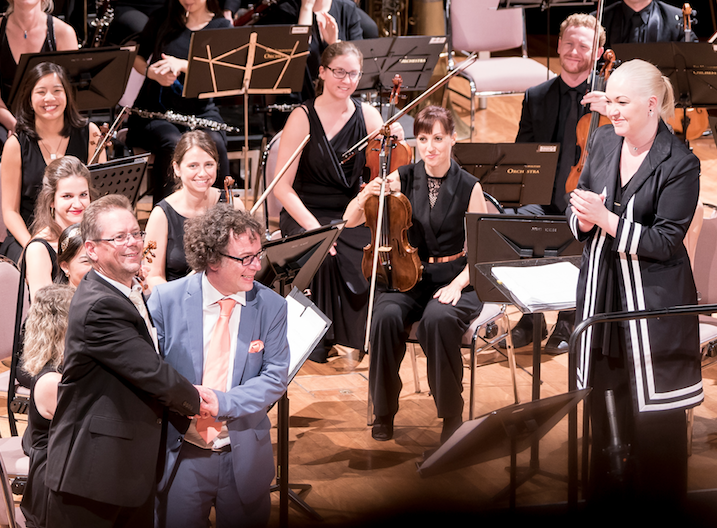With the exception of the world premiere of a new Australian piece (James Coyle’s The Bright Seraphim), this concert from the enterprising Metropolitan Orchestra of Sydney gave us an interesting and well-balanced Russian programme.
The concert opened with Glinka’s Overture to Russlan and Ludmilla. Under the steadfast hand of The Metropolitan Orchestra’s resident conductor Sarah-Grace Williams, this showpiece zipped along to good effect, although there was some imprecision of ensemble amongst the violins during the fast semiquaver passages. It was nothing damaging, and better that than a sluggish tempo. This is not the piece for caution!
Australian pianist Benjamin Kopp brought poetic sensibility and notable technical fluency to Rachmaninov’s Piano Concerto No 2. He and the orchestra were at their best in the slow movement, which was played with sensitivity and restraint. The outer movements had their exciting moments, but were beset by a balance problem: the piano was often drowned out by the orchestra. Could Kopp have provided more sheer weight? Was it due to the swimmy acoustic of the hall? Or is it simply that we are accustomed to hearing an unnatural balance that magnifies the piano in recordings of this concerto? A bit of all three, I suspect. Kopp is also a member of the Streeton Trio, whose recordings have been praised in this magazine and elsewhere. His finesse and sensibility are undoubtedly an asset in chamber repertoire.
 Composer Jim Coyle with Anthony Heinrichs post world premiere. Photo © John B C Images
Composer Jim Coyle with Anthony Heinrichs post world premiere. Photo © John B C Images
The concert’s second half began with Coyle’s The Bright Seraphim, in which Anthony Heinrich’s stratospheric piccolo trumpet gleamed through high string chords, or over chorale-like harmonies from the brass. The shorter closing part of the work brought an irresistible rhythmic momentum, featuring subtle but effective writing for percussion. Heinrich, who commissioned this work from the composer, played with impressive accuracy and purity of tone, while the Met orchestra’s contribution was tight and smoothly blended. Coyle writes in a more or less tonal idiom – Copland was suggested in the transparency of his orchestral textures – and the work certainly finishes with a zing. Let’s hear more from this fine composer.
Shostakovich’s Ninth is unique among his symphonies in that it is practically a divertimento. The circus is conjured up in the humour of its first and last movements, and even the two slow movements have a tongue-in-cheek quality about them. Williams found all this; I especially liked her tempo changes for the initially lugubrious theme of the finale. The wind soloists shone in this work, particularly bassoonist Alison Wormell whose long solo in the fourth movement was touchingly plaintive. Again, in the faster sections, the fiddles weren’t always together – a slight issue that would soon be ironed out if the orchestra got to play together more often. (Their next concert, on July 15, involves strings alone in a delectable programme that includes Holst’s St Paul’s Suite and the Double Concerto for Saxophone, Guitar and Strings by Astor Piazzolla.)
For a number of reasons, but primarily the players’ high level of personal commitment, this enjoyable Russian programme counted as an undoubted success. Above all, kudos must go to Williams: a conductor of authority, who has a point of view and the ability to express it clearly. It is her triumph to have molded this group of excellent individual musicians into a true orchestral ensemble.











Comments
Log in to join the conversation.